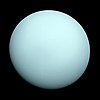
2060 Chiron is a small Solar System body in the outer Solar System, orbiting the Sun between Saturn and Uranus. Discovered in 1977 by Charles Kowal, it was the first-identified member of a new class of objects now known as centaurs—bodies orbiting between the asteroid belt and the Kuiper belt.
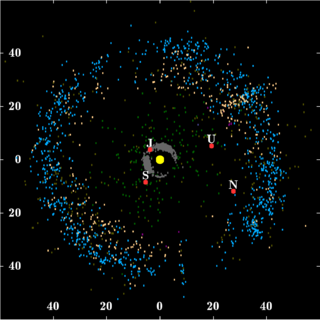
In planetary astronomy, a centaur is a small Solar System body with either a perihelion or a semi-major axis between those of the outer planets. Centaurs generally have unstable orbits because they cross or have crossed the orbits of one or more of the giant planets; almost all their orbits have dynamic lifetimes of only a few million years, but there is one known centaur, 514107 Kaʻepaokaʻawela, which may be in a stable orbit. Centaurs typically exhibit the characteristics of both asteroids and comets. They are named after the mythological centaurs that were a mixture of horse and human. Observational bias toward large objects makes determination of the total centaur population difficult. Estimates for the number of centaurs in the Solar System more than 1 km in diameter range from as low as 44,000 to more than 10,000,000.
Hans Scholl is a German astronomer, who worked at the Astronomisches Rechen-Institut in Heidelberg, Germany, and at the Côte d'Azur Observatory in Nice, France. In 1999, he was part of a team that discovered three moons of Uranus: Prospero, Setebos and Stephano. He has also co-discoverered 55 minor planets together with Italian astronomer Andrea Boattini at ESO's La Silla Observatory site in northern Chile during 2003–2005.
Matthew J. Holman is a Smithsonian astrophysicist and lecturer at Harvard University. Holman studied at MIT, where he received his bachelor's degree in mathematics in 1989 and his PhD in planetary science in 1994. He was awarded the Newcomb Cleveland Prize in 1998.
(87269) 2000 OO67 (prov. designation:2000 OO67) is a trans-Neptunian object, approximately 64 kilometers (40 miles) in diameter, on a highly eccentric orbit in the outermost region of the Solar System. It was discovered by astronomers at the Chilean Cerro Tololo Inter-American Observatory on 29 July 2000.
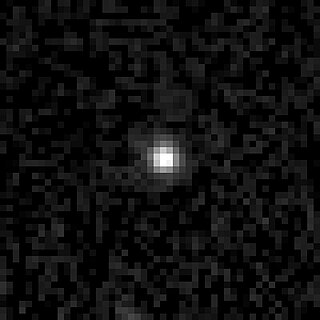
10199 Chariklo is the largest confirmed centaur. It orbits the Sun between Saturn and Uranus, grazing the orbit of Uranus. On 26 March 2014, astronomers announced the discovery of two rings around Chariklo by observing a stellar occultation, making it the first minor planet known to have rings.
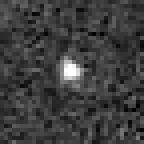
10370 Hylonome (; prov. designation: 1995 DW2) is a minor planet orbiting in the outer Solar System. The dark and icy body belongs to the class of centaurs and measures approximately 72 kilometers (45 miles) in diameter. It was discovered on 27 February 1995, by English astronomer David C. Jewitt and Vietnamese American astronomer Jane Luu at the U.S. Mauna Kea Observatory in Hawaii, and later named after the mythological creature Hylonome.
83982 Crantor, prov. designation: 2002 GO9, is a centaur in a 1:1 resonance with Uranus, approximately 60 kilometers (37 miles) in diameter. It was discovered on 12 April 2002, by astronomers of the Near-Earth Asteroid Tracking at the Palomar Observatory in California, United States. This minor planet was named for Crantor from Greek mythology.

(308933) 2006 SQ372 is a trans-Neptunian object and highly eccentric centaur on a cometary-like orbit in the outer region of the Solar System, approximately 123 kilometers (76 miles) in diameter. It was discovered through the Sloan Digital Sky Survey by astronomers Andrew Becker, Andrew Puckett and Jeremy Kubica on images first taken on 27 September 2006 (with precovery images dated to 13 September 2005).
(44594) 1999 OX3 is an eccentric trans-Neptunian object with a centaur-like orbit from the outer Solar System, approximately 150 kilometers in diameter. It was discovered on 21 July 1999, by astronomers John Kavelaars, Brett Gladman, Matthew Holman and Jean-Marc Petit at Mauna Kea Observatories, Hawaii, United States.
A distant minor planet, or distant object, is any minor planet found beyond Jupiter in the outer Solar System that is not commonly thought of as an "asteroid". The umbrella term is used by IAU's Minor Planet Center (MPC), which is responsible for the identification, designation and orbit computation of these objects. As of July 2020, the MPC maintains 3929 distant objects in its data base.
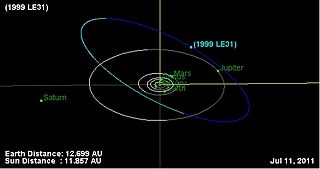
1999 LE31 is a centaur and damocloid on a retrograde and eccentric orbit from the outer region of the Solar System. It was first observed on 12 June 1999, by astronomers with the LINEAR program at the Lincoln Lab's ETS near Socorro, New Mexico, in the United States. The unusual object measures approximately 16.8 kilometers (10 miles) in diameter.
2014 YX49 is a centaur and Uranus co-orbital, approximately 77 kilometers (48 miles) in diameter, first observed on December 26, 2014, by the Pan-STARRS survey. It is the second known centaur on a tadpole orbit with Uranus, and the fourth Uranus co-orbital discovered after 83982 Crantor, 2011 QF99 and (472651) 2015 DB216.
This page is based on this
Wikipedia article Text is available under the
CC BY-SA 4.0 license; additional terms may apply.
Images, videos and audio are available under their respective licenses.

